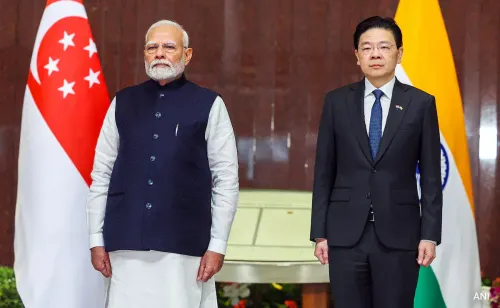
India-U.S. Trade Relations in Electronics Manufacturing and Input Devices
Explore the evolving trade relationship between India and the U.S. in electronics manufacturing and input devices, highlighting key contributors, economic synergies, and the future of this critical sector.
By India Index
4 min read
The trade relationship between India and the United States has evolved significantly, reflecting the growing economic ties and mutual interests of these two global powerhouses. In 2022, bilateral trade between India and the U.S. reached an impressive $190 billion, making the U.S. India’s largest trading partner in merchandise trade. Among the various sectors contributing to this robust trade relationship, electronics manufacturing and input devices stand out as critical components, driving technological advancements and economic growth in both nations.
India and the U.S. have cultivated a dynamic trade partnership that has expanded beyond traditional industries into more complex and high-value sectors like technology and electronics. This shift aligns with the broader global trend of integrating advanced technology into everyday life, making electronics manufacturing a cornerstone of modern economic development. The collaboration between India’s growing manufacturing capabilities and the U.S.'s technological innovation has created a symbiotic relationship that benefits both economies.
The early trade relations between India and the U.S. were predominantly focused on traditional sectors such as textiles and agriculture. However, as the global economy evolved and the demand for technological products increased, the focus gradually shifted towards electronics and technology-related industries. Today, electronics and input devices are significant contributors to the merchandise trade between India and the U.S. The trade volume in these sectors has grown steadily, driven by India’s expanding manufacturing capabilities and the U.S.’s demand for high-quality, cost-effective electronics products.
Companies like Linepro are leading examples of India’s growing capabilities in this sector. Linepro specializes in manufacturing membrane switches, capacitive touch keypads, and other custom input devices that are critical for various electronic applications. Their expertise in producing high-quality, reliable input devices has made them a valuable partner for U.S. companies looking for cost-effective and technologically advanced solutions. This collaboration highlights the mutual benefits of combining India’s manufacturing strengths with U.S. technological innovation.
One of the primary drivers of the India-U.S. trade relationship in electronics manufacturing is the economic advantage each country offers the other. India’s cost-effective labor force, combined with the U.S.’s cutting-edge technological innovation, creates a powerful synergy that boosts competitiveness and efficiency in the global market. Government initiatives like India’s "Make in India" campaign and policies promoting bilateral investments have further strengthened the trade relationship. These initiatives encourage collaboration and investment in electronics manufacturing, creating a conducive environment for growth in this sector.
The shared interest in emerging technologies such as artificial intelligence (AI) and the Internet of Things (IoT) has also deepened cooperation between India and the U.S. Joint research and development (R&D) projects and initiatives like the U.S.-India Initiative on Critical and Emerging Technology (iCET) highlight the commitment of both nations to advancing technological innovation together. This comes as global supply chain winds have shifted. The global supply chain disruptions in recent years, particularly those related to China, have underscored the need for resilient and diversified supply chains. The U.S. has been actively pursuing a "friendshoring" strategy, encouraging American companies to shift electronics and technology manufacturing operations to friendlier countries like India and Vietnam. While Vietnam currently leads with higher export volumes and more established manufacturing capabilities, India is making significant strides to become a top manufacturing alternative in Asia.
The Indian government has started reducing these tariffs to attract more foreign investment in the electronics sector. India's growing relationship with the U.S., exemplified by increased investment from tech giants like Apple and Google, positions it as a strong contender in this trade race. Vietnam's close ties with China could also make India a more attractive option for U.S. companies looking to diversify their supply chains away from China in the coming years.
The trade relationship between India and the U.S. in electronics manufacturing and input devices is robust and growing. This growth is driven by a combination of economic, political, and technological factors that align the interests of both nations. Companies like Linepro are at the forefront of this collaboration, providing essential input devices that fuel technological innovation. As both countries continue to navigate global challenges and leverage new opportunities, the future of India-U.S. trade relations in this sector looks promising. With continued collaboration and mutual investment, both countries stand to benefit from deeper economic integration and shared technological advancements.
Was this article helpful? 💡
View Similar Articles

CNBC: Samir Kapadia on How India’s Semiconductor Collaboration with Singapore Could Shape the Global Market
India Index
Sustainability in Export Supply Chains: Practices and Benefits in a Tariff-Affected Market
India Index
Ensuring Supply Chain Security and Compliance with C-TPAT: A Comprehensive Guide
India Index